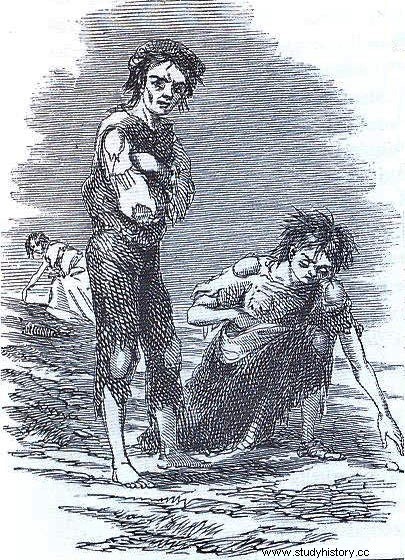- Between 1800 and 1845, Ireland experienced a few episodes of food difficulties:food shortages affected the population, but these crises were resolved. The Irish produce enough food to feed themselves, but also to export abroad.
- In 1845, a fungus, mildew, developed in Europe. This disease particularly attacks the potato, which is the main foodstuff of the Irish. The humid climate favors the development of the disease and 40% of the harvest is decimated.
- The disease persists and reappears for several years. About 1 million people die directly from this shortage:this episode is called the Great Famine. The province of Connacht is the most affected, and, with the exception of Dublin and its surroundings, all of Ireland has an excess mortality rate.
XIX th century

Procedure
The Great Famine triggers an unprecedented wave of departures:the Irish leave their country en masse. The farming province of Munchster in the southwest of Ireland, impoverished and badly affected by famine, sees the biggest departure in the country.
The diversity of this emigration makes it special:women also choose to leave. The United States is the main destination for emigrants:if, initially, the Irish are mainly farmers, they settle in the metropolises of the east coast to integrate industries. They participate in the growth and development of the American nation.
Consequences
- An estimated 2 million migrants have left Ireland. More than 60% of them are destined for the United States. Great Britain, Australia and Canada are the other countries that will welcome these newcomers.
- The episode of the Great Famine profoundly upset Irish society. The demography of Ireland falls dramatically:Europe has not experienced a similar episode in modern times.
